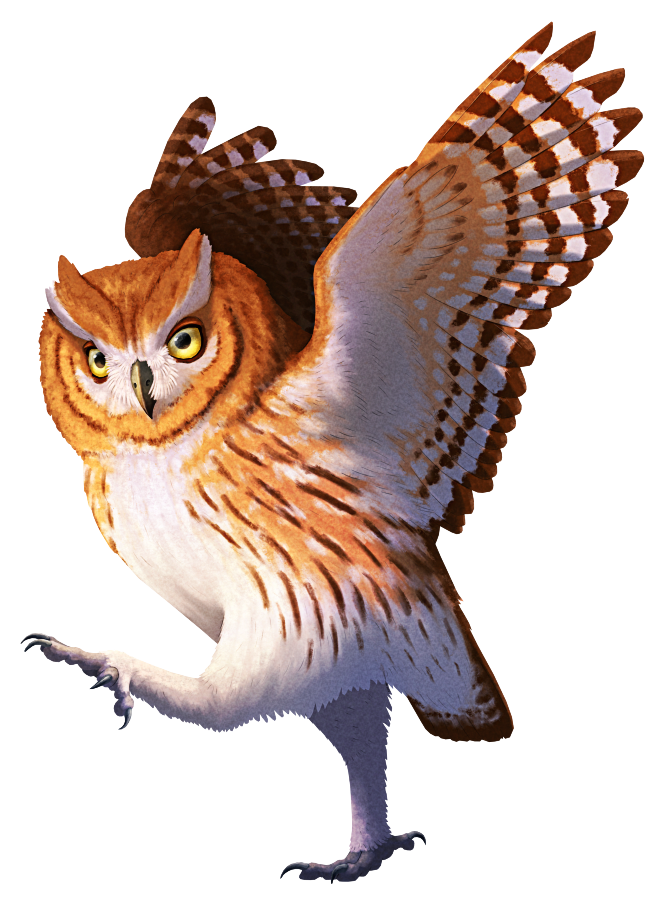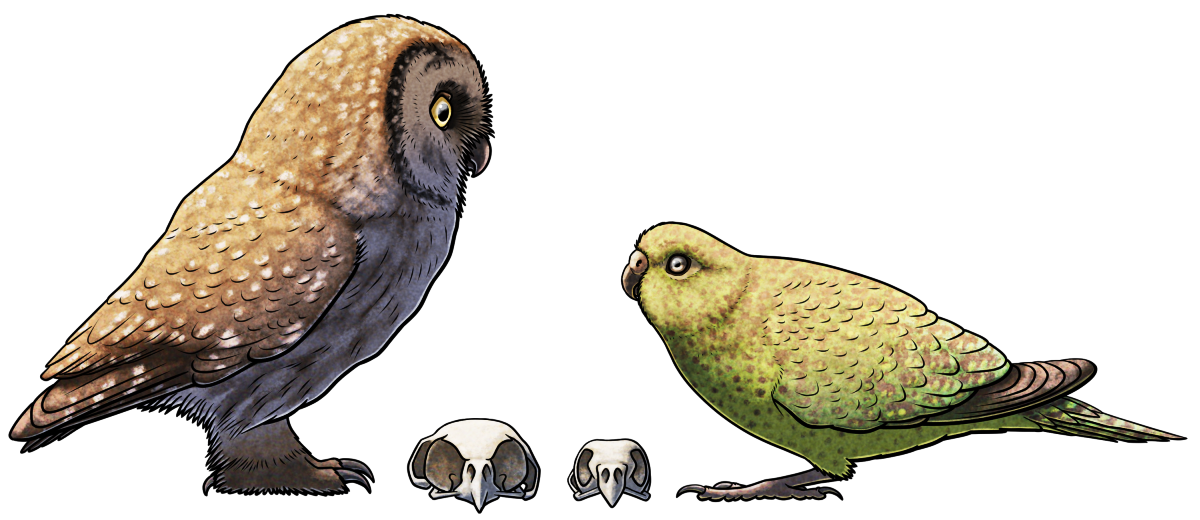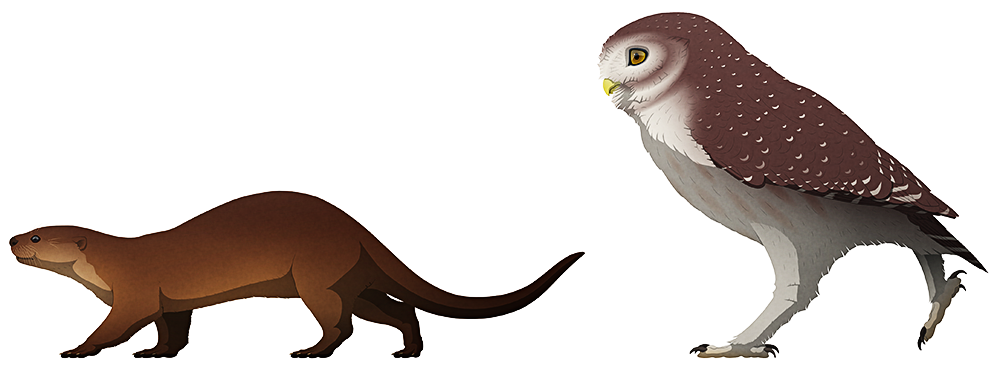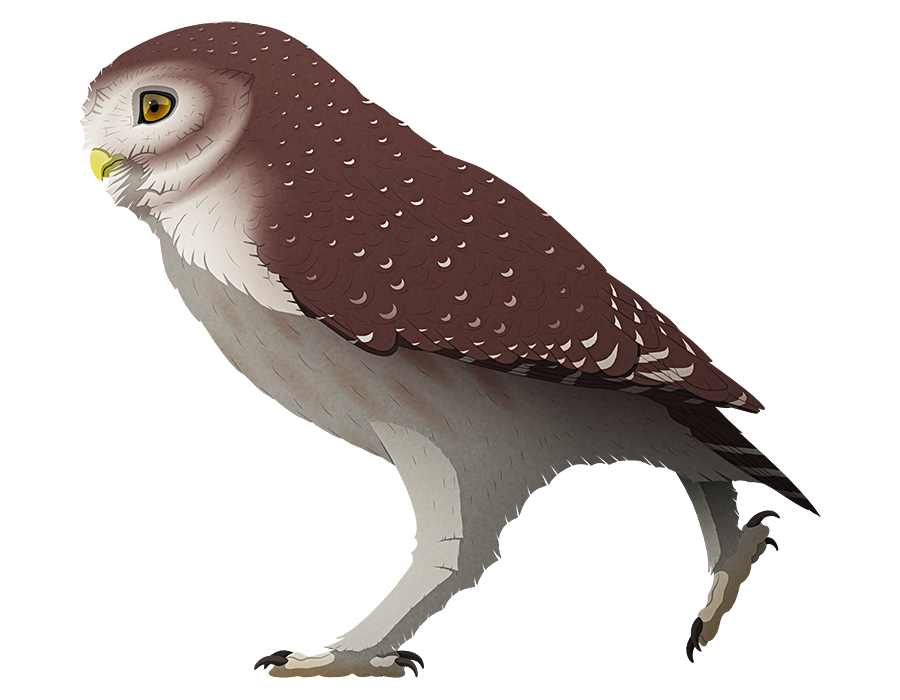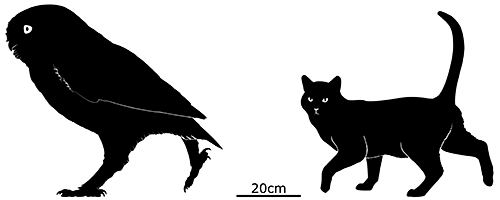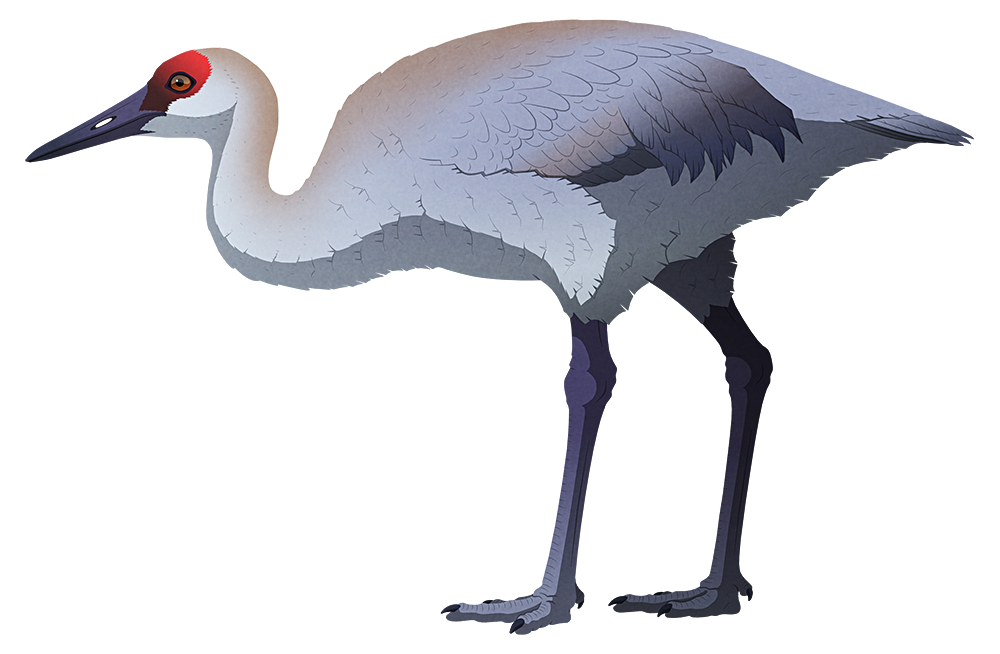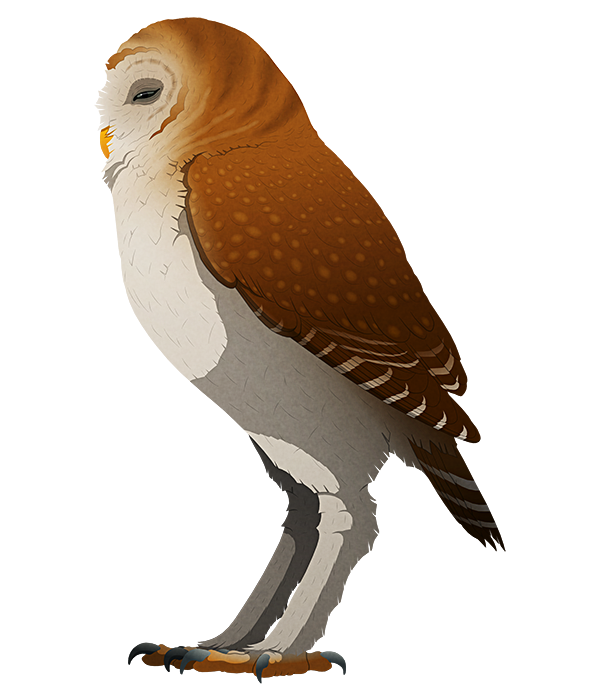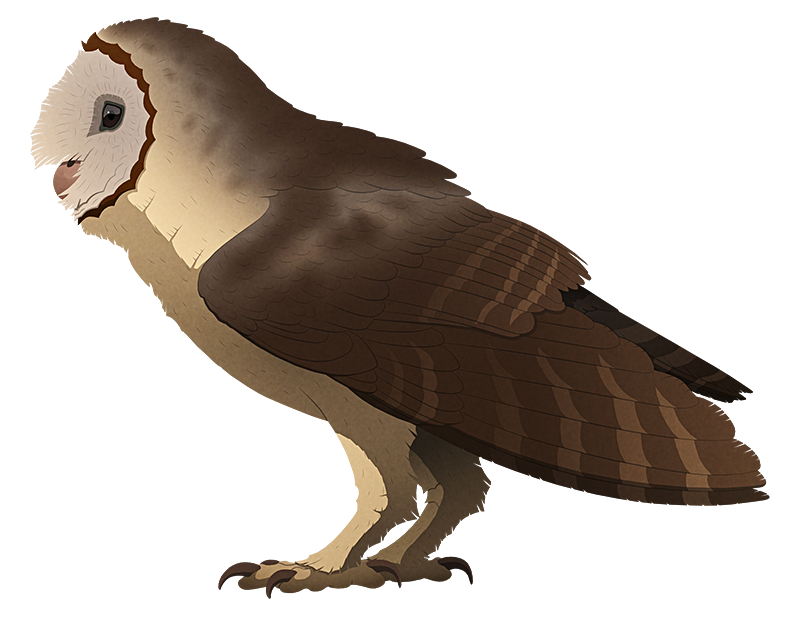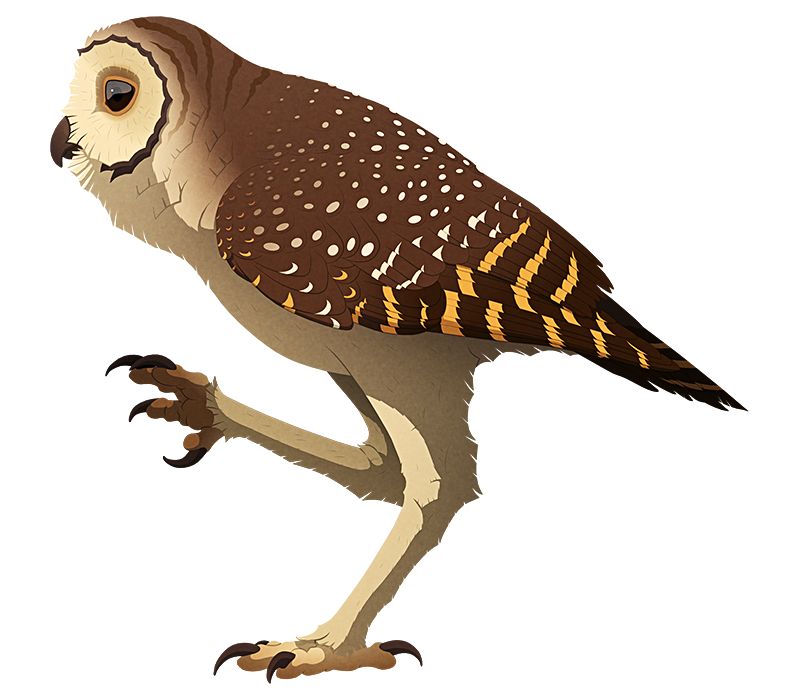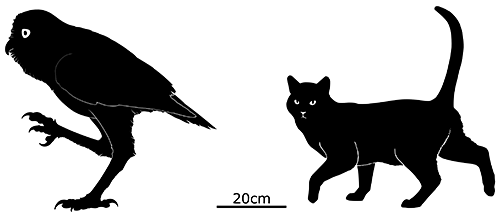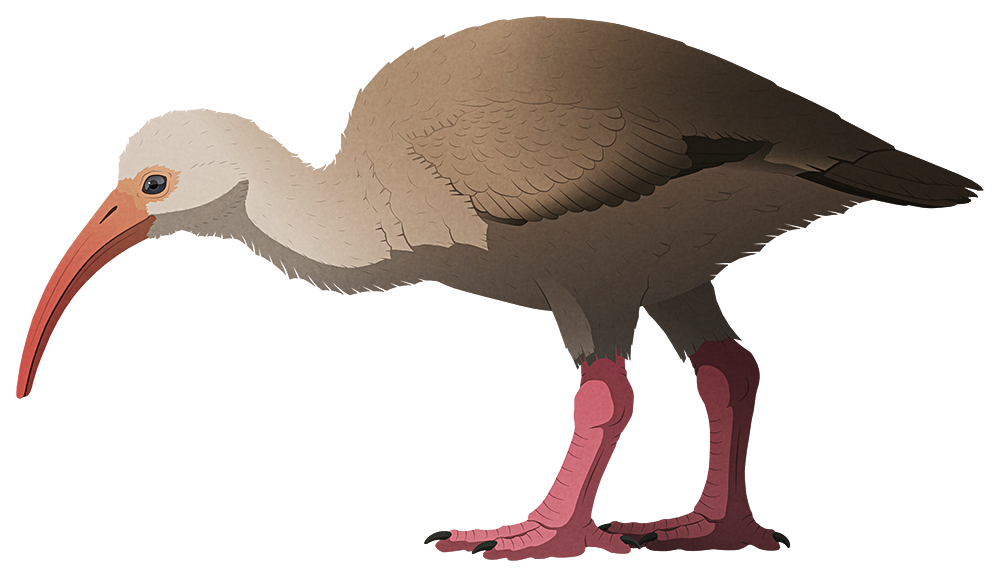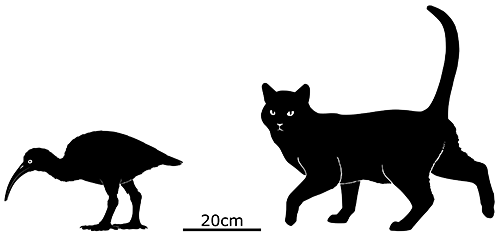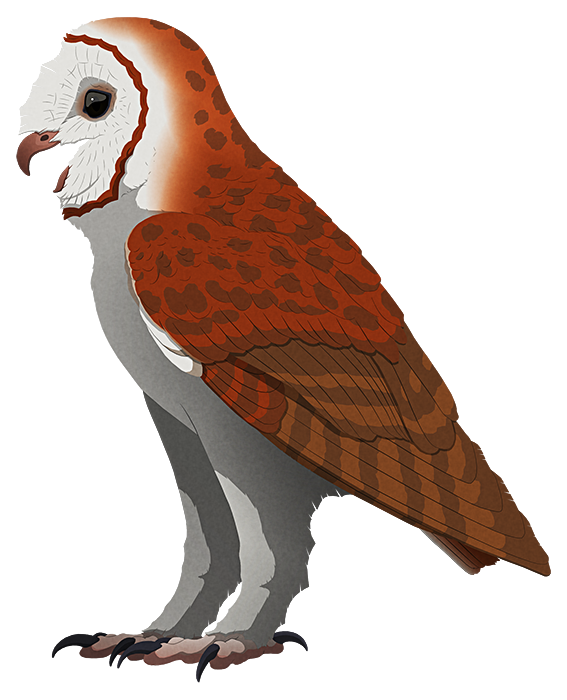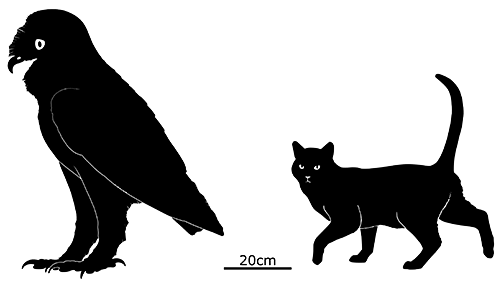When owls find their way onto isolated islands lacking any terrestrial predators, they have a tendency to take up that role for themselves – evolving longer legs and shorter wings, and specializing more towards hunting on foot. From New Zealand to Hawaii to the Caribbean to the Mediterranean to Macaronesia, leggy island ground-owls have independently happened over and over again in the last few million years—
—And, unfortunately, they’ve all also become victims of the Holocene extinction, their fragile island ecosystems too easily disrupted by human activity and the arrival of invasive species.
The São Miguel scops owl (Otus frutuosoi) was found only in the Azores on São Miguel Island. About 18cm tall (~7″), it was slightly smaller than its relative the Eurasian scops owl, with longer legs, a wider body, and much shorter wings.
Its wing proportions indicate it would have been a poor flyer, instead primarily hunting on foot in the dense laurisilva forests. Since there were no terrestrial mammals or reptiles on São Miguel at the time, its diet probably mainly consisted of insects and other invertebrates – and it would have in turn been the potential prey of larger predatory birds like buzzards and long-eared owls.
All currently known subfossil remains of the São Miguel scops owl date only from the Holocene, between about 50 BCE and 125 CE. It’s likely that it was extinct by the 1400s, following the settlement of humans in the Azores, destruction of its forest habitat, and the introduction of rodents, cats, and weasels.

